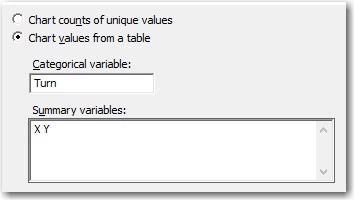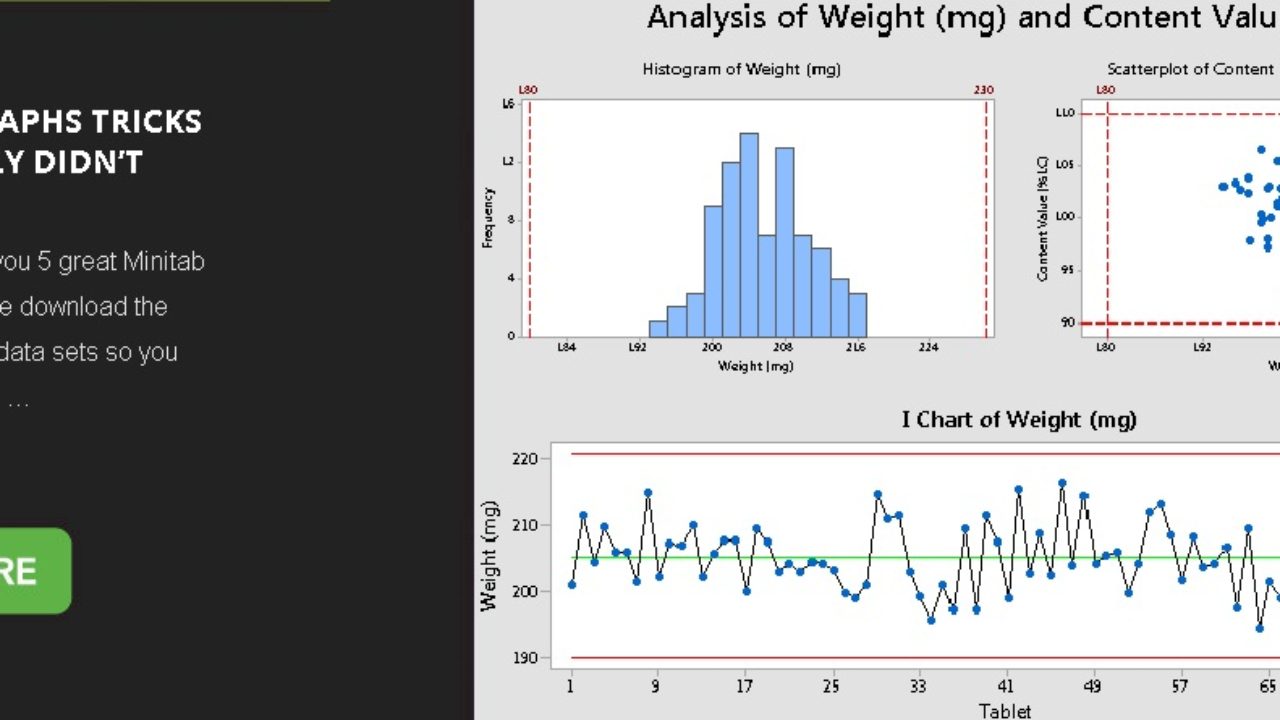

Since there are 8 possible outcomes, the probabilities for 0, 1, 2, and 3 successes are Here are all the possible outcomes, where H = head and T = tails: Imagine a simple event, say flipping a coin 3 times.
#Minitab express ecdf graph software
show () Statistical implementation Ī non-exhaustive list of software implementations of Empirical Distribution function includes: step ( x, upper, "r", where = "post" ) plt. step ( x, lower, "r", where = "post" ) plt. step ( x, F, where = "post" ) lower, upper = _conf_set ( F ) plt. loadtxt ( nerve_data ) x = nerve_data / 50.0 # Was in 1/50 seconds cdf = ECDF ( x ) x. argsort ( y ) return interp1d ( y, x ) if _name_ = "_main_" : # TODO: Make sure everything is correctly aligned and make a plotting # function from urllib.request import urlopen import matplotlib.pyplot as plt nerve_data = urlopen ( "" ) nerve_data = np. append ( fn ( _x, ** keywords )) y = np. asarray ( x ) if vectorized : y = fn ( x, ** keywords ) else : y = for _x in x : y. _init_ ( x, y, side = side, sorted = True ) def monotone_fn_inverter ( fn, x, vectorized = True, ** keywords ): x = np. linspace ( 1.0 / nobs, 1, nobs ) super ( ECDF, self ). y class ECDF ( StepFunction ): def _init_ ( self, x, side = "right" ): x = np. shape def _call_ ( self, time ): tind = np. shape ) != 1 : msg = "x and y must be 1-dimensional" raise ValueError ( msg ) self. shape : msg = "x and y do not have the same shape" raise ValueError ( msg ) if len ( _x. lower () not in : msg = "side can take the values 'right' or 'left'" raise ValueError ( msg ) self. clip ( F + epsilon, 0, 1 ) return lower, upper class StepFunction : def _init_ ( self, x, y, ival = 0.0, sorted = False, side = "left" ): if side. log ( 2.0 / alpha ) / ( 2 * nobs )) lower = np. """ Empirical CDF Functions """ import numpy as np from scipy.interpolate import interp1d def _conf_set ( F, alpha = 0.05 ): nobs = len ( F ) epsilon = np. Then the empirical distribution function is defined as F ^ n ( t ) = number of elements in the sample ≤ t n = 1 n ∑ i = 1 n 1 X i ≤ t, Confidence intervals Let ( X 1, …, X n) be independent, identically distributed real random variables with the common cumulative distribution function F( t). A number of results exist to quantify the rate of convergence of the empirical distribution function to the underlying cumulative distribution function. It converges with probability 1 to that underlying distribution, according to the Glivenko–Cantelli theorem.

The empirical distribution function is an estimate of the cumulative distribution function that generated the points in the sample. Its value at any specified value of the measured variable is the fraction of observations of the measured variable that are less than or equal to the specified value. This cumulative distribution function is a step function that jumps up by 1/ n at each of the n data points.

In statistics, an empirical distribution function (commonly also called an empirical Cumulative Distribution Function, eCDF) is the distribution function associated with the empirical measure of a sample. The grey hash marks represent the observations in a particular sample drawn from that distribution, and the horizontal steps of the blue step function (including the leftmost point in each step but not including the rightmost point) form the empirical distribution function of that sample. The green curve, which asymptotically approaches heights of 0 and 1 without reaching them, is the true cumulative distribution function of the standard normal distribution.


 0 kommentar(er)
0 kommentar(er)
